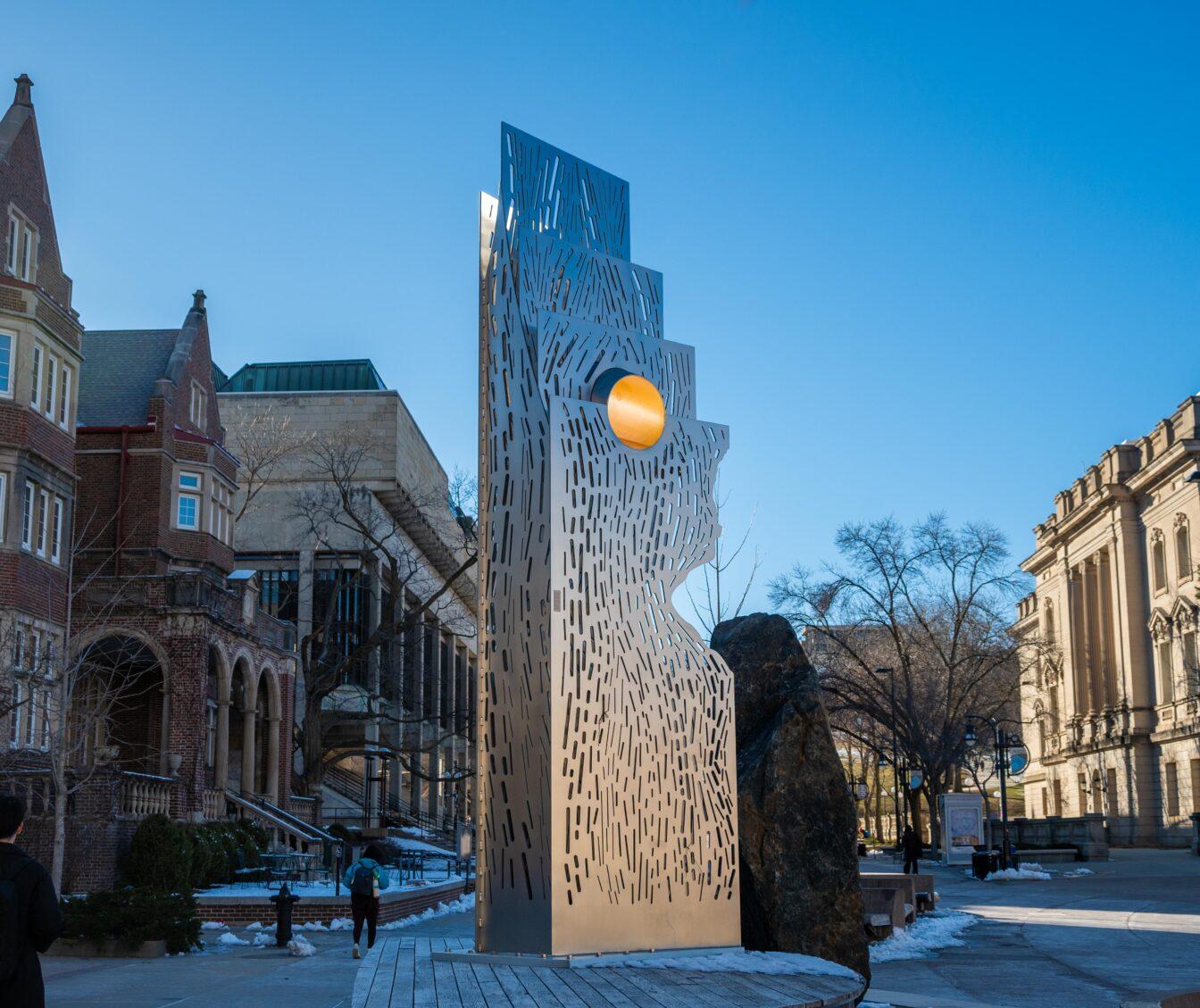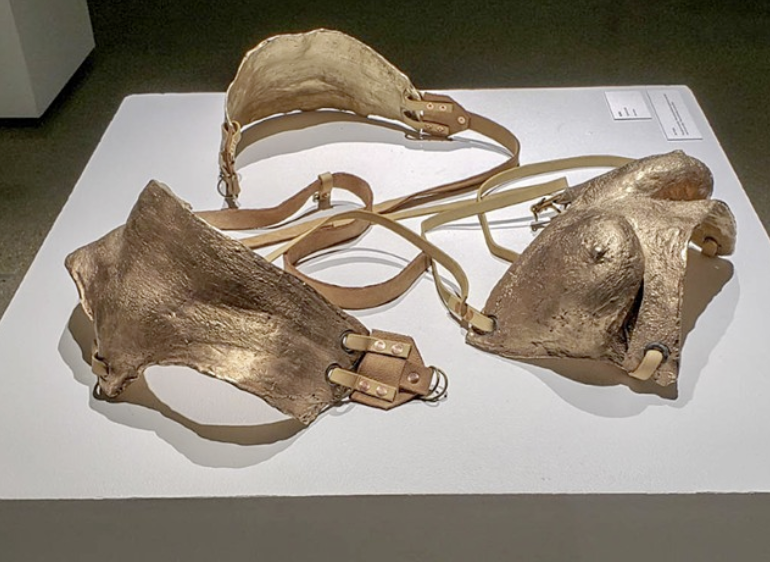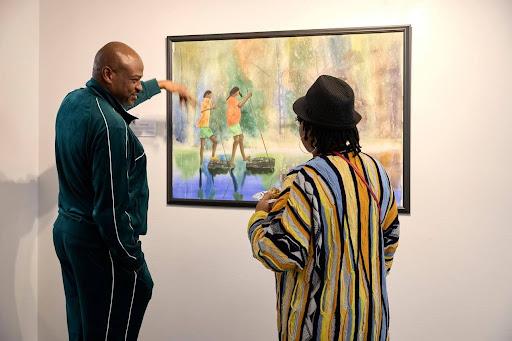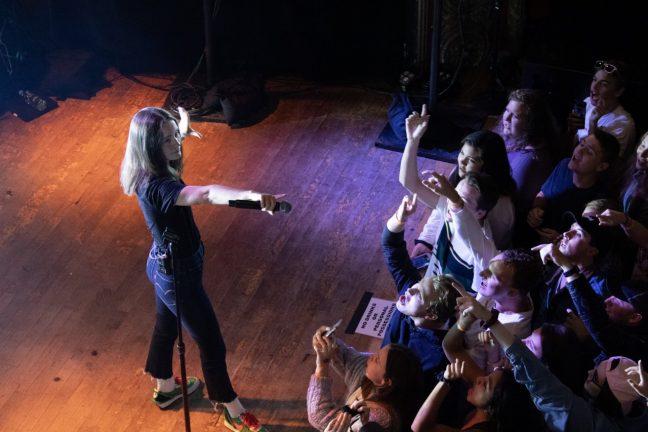
Every year, 1.5 million art enthusiasts travel to Florence, Italy, to explore one of the world’s most renowned and oldest art museums, the Uffizi Gallery. The Madison community can now enjoy this international experience at the Chazen Art Museum with the opening of its latest exhibit, “Offering of the Angels: Painting and Tapestries from the Uffizi Gallery.”
Running from Aug. 24 to Nov. 25 in the Pleasant T. Rowland Galleries, the Chazen is the only museum in the Midwest, and one of four across the country, to host this exhibit. The collection of 45 paintings and tapestries was curated in 2007 as a Christmas gift to the citizens of Florence by the director of the Uffizi museum, Antonio Natali.
This exhibit features the work of Baroque and Renaissance artists such as Sandro Botticelli, Lorenzo Monaco and Titian. A theme of Eucharist unites the pieces and traces a biblical Christian path across stories from the Old and New Testament.
Broken into five sections, the exhibit begins with “Old Testament Premonitions, Sin, and The Fall.” An introductory painting titled “The Creation of Adam” by Jacopo da Empoli possesses a bold blue hue and is a highlight of this first section.
Walking through the exhibit, works of all sizes and tones weave together to form a story and historical timeline. Occasionally, the paintings themselves explicitly direct the line of sight. In the second section of the exhibit, two separate pieces, together titled “The Annunciation,” display figures pointing to another part of the work.
The third section of the exhibit works to describe the relationship between Jesus as a child and the Virgin Mary. In some cases, this part of the exhibit seems incoherent or lacking in emotion – a bit ironic considering the nature of the subject.
An occasional piece does stand out, however. In “The Nativity with Shepherds” by Alessandro Bonvicino, a young Jesus reaches out for the Virgin Mary. Whether he is reaching out in need of her or possibly trying to bless her, this large-scale painting affords visitors their own personal interpretations.
While some depictions of Jesus and the Virgin Mary are bland, others are crisp with color and detail. A renowned version of “Madonna and Child” by Sandro Botticelli expertly contrasts everyday earth tones with bright pink and red cloth fabric on Jesus and Mary, respectively. Even its golden frame displays impressive craftsmanship.
The next section of the exhibit, dedicated to “The Last Summer, the Passion, and the Cross,” is extremely emotional, particularly through the suffering represented in the depictions of Jesus’s crucifixions.
Luca Giordano’s “The Ascent to Calvary” is especially dark, emphasizing the grave emotions of the situation. A bit of lightness surrounding Jesus and a woman attempting to wipe blood of his face offers contrast, highlighting a deed of kindness during a time of obvious suffering.
Bonifacio De’ Pitati’s “The Last Supper” brings the fourth section together, illustrating Jesus and the 12 disciples sharing bread and wine. In an exhibit dedicated to the Eucharist, this vast, horizontal painting becomes quite pronounced.
“The Resurrection,” and more specifically, the Eucharist, become the subject of the final section of the exhibit. Da Empoli, who painted “The Creation of Adam,” offers a small but powerful piece of blood pouring out of a standing Jesus into a goblet at his feet.
One exciting component to this section of the gallery is the impressive restoration of “The Madonna and Child with Saint Catherine of Alexandria” by Piece de Cadore. Following a workshop with Tiziano Vecellio, this work of art is presented at various stages of a restoration process including cleaning, conservation, infrared and x-ray examinations.
In addition to the paintings in this exhibit, two tapestries woven by Nicola Karcher make a strong presence, one of which uses particularly intricate weaving techniques and color to represent the Resurrection. A unique addition to the exhibit, it would have been nice to see more of these tapestries, possibly even one for each section.
A truly great accomplishment, the Chazen provides a wonderful opportunity to experience renowned international art at a local venue. The detailed artworks and the emotions they present can only be experienced with great collaborations; the combined efforts of the Chazen and Italy’s Uffizi Gallery have done just that.
























